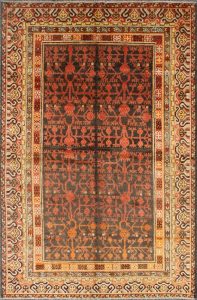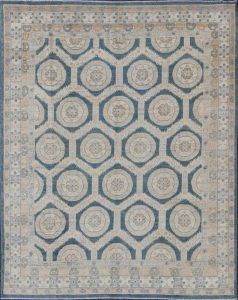What are Khotan Carpets?
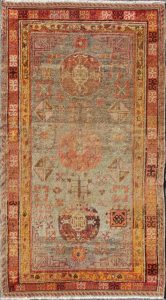 |
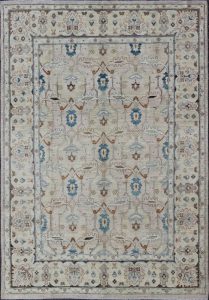 |
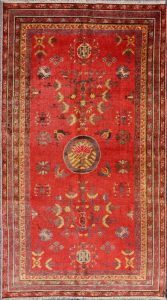 |
|
Khotan rugs are embedded with a history both mysterious and enchanting. Originating along the proliferating trade route The Silk Road, Khotan rugs draw many elements from Chinese and Asian designs. What makes them so appealing is their versatility: they could easily function in both contemporary and traditional interiors alike.
Read on for more information about these oriental works of art.
|
||
How and When Did Khotan Rug-Making Begin?
|
||
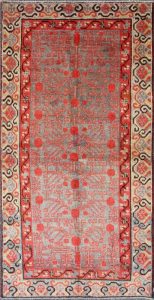 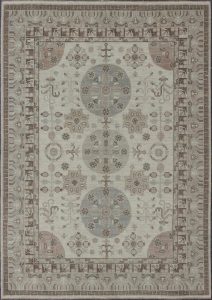
The city of Khotan (present day Xinjiang, China) was located in Eastern Turkestan on the Silk Road, which was used by merchants and traders from China to Western Europe. Turkestan existed at the fulcrum point where The Silk Road branched out to the south to India, to the north to central Asia, and to the west to Persia, Anatolia and Europe. It’s on the southern edge of the Tarim Basin, which is a vast desert area known to be a main center for trading along the Silk Road.
Historians believe the earliest settlers began moving to east Turkestan around 1,000 BC. Most of them were Indo-Europeans who had ties to Persia, which was at war with Turkish nomads, as told in the epic poem, “Shahnameh.” The settlers lived in low-lying areas and adopted Buddhism from India. Khotan existed as a Buddhist kingdom for over a thousand years until Muslims invaded it in 1006, and it is know to have a rich crafting culture that includes silk and carpet weaving.
|
||
How Are Khotan Rugs Made?
|
||
|
Khotan rugs are characterized by Chinese details and Asian designs. Many Khotan carpet patterns were inspired by the mountains and items traded along the Silk Road, ranging from pomegranates to medallions to Buddhist and Asian motifs and Persian and Indian designs.
The coloring of Antique Khotan rugs was intense in the early days of their production, but present day Vintage Khotan rugs are more pallid and light in color.
Historically, Khotan rugs were woven using all silk or a combination of silk and wool. Khotan carpets are sometimes mistaken for rugs made in Samarkand.
|
||
 |
||
|
Click the images above to learn more about each rug, such as when it was produced, its size, and the materials used in its production. View more from our extensive collection of Khotan carpets on our website by clicking here. |
||
|
Leave your questions about Khotan rugs in the comments below. And click here to see more Khotan carpets on our website.
|
||

